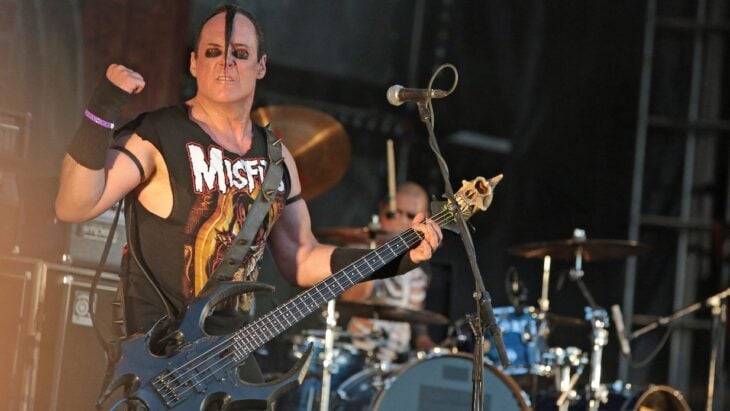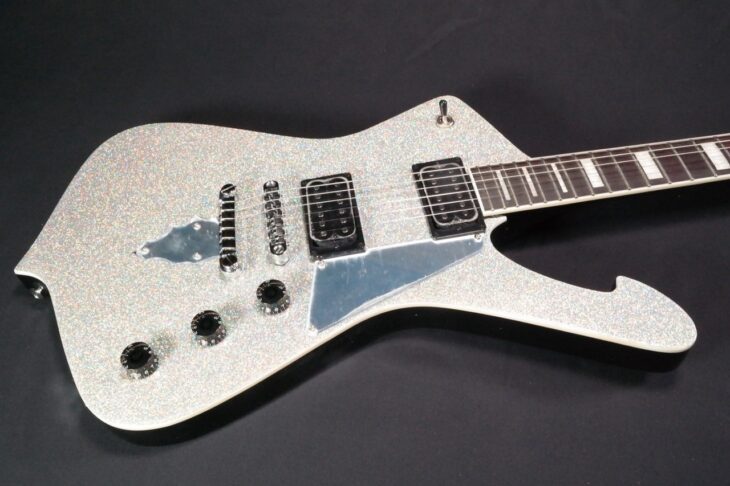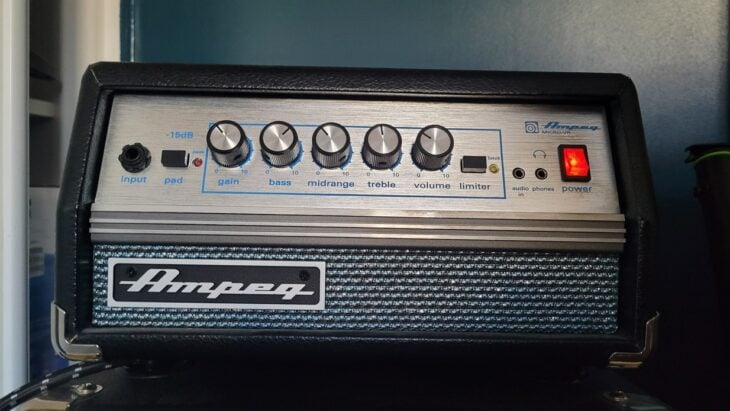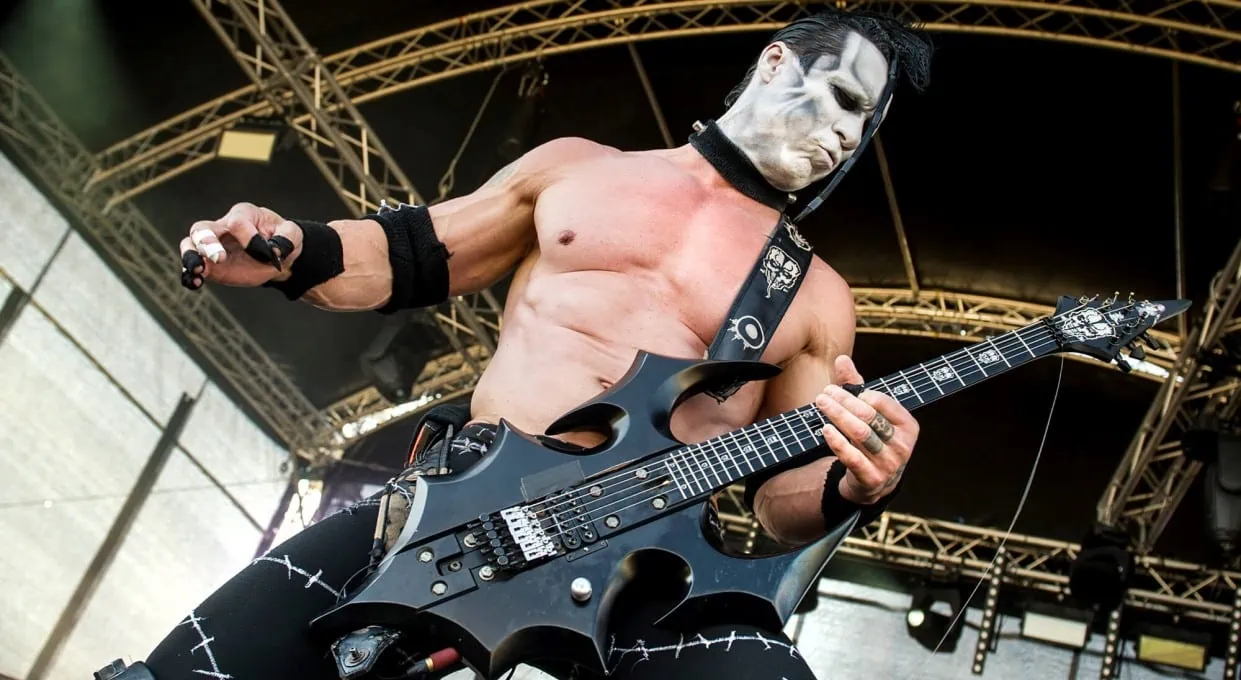Exploding onto the burgeoning punk rock scene in the late ‘70s with a unique brand of horror-influenced punk rock, Misfits remains one of the seminal acts of the 20th century.
Although, in true punk fashion, chart-topping success has evaded the Misfits over the years, they’re cited as a major influence on some of the biggest acts in rock and metal history, including the likes of Metallica and My Chemical Romance.
No small part of the Misfits’ early-80s success and contribution to the hardcore punk movement was lead guitar player Doyle’s sharp, aggressive playing style.
Doyle – also known as Doyle Wolfgang Von Frankenstein and Paul Caiafa – was a roadie before joining the band in 1980. Upon joining the band he unleashed an uncompromising, heavy-handed approach to the guitar, focusing on rapid-fire downstrokes and power chords rather than technical proficiency.
Aspiring punk players looking to capture some of the raw-edged energy of Doyle’s playing have come to the right place. In this article, I’ll take you through all the key pieces of gear you need to capture the Doyle sound.
Table of Contents
Doyle’s Guitars

Doyle’s main choice of guitar during the early ‘80s was the Ibanez Iceman, which he used up until the late 1980s. Around 1987, Doyle took to playing a custom-made bat-shaped guitar dubbed the Rand Annihilator.
During the early ‘80s, Doyle also played a few entry-level Les Paul-style guitars. He favored the Dot Studio and Special SL models available at the time.
Most of us don’t have a luthier around to custom-build a guitar that looks like Batman would wear it across his chest, so we’ll have to make do with modern iterations of the Iceman and Les Paul models Doyle used in the early Misfits days.
It can be easier said than done to get your hands on a vintage Ibanez Iceman these days, but fortunately, Ibanez has recently released a similar guitar. The Paul Stanley signature model from Ibanez – either the PS120 or entry-level PS60 – is an Iceman-style guitar with a few updates, including Seymour Duncan pickups.

Some punk players might balk at the KISS-ready visual appointments on these guitars, like the sparkle binding and glittery finish. In that case, I’d recommend a Les Paul Special or Les Paul Studio, ideally in black as per Doyle’s ‘80s Les Pauls.
Regardless of your guitar choice, Doyle prefers high-output humbuckers, so you’ll likely want to invest in the Seymour Duncan Invader pickups that Doyle uses in his own custom guitars.

As a final note on guitars, a significant, but not insurmountable, piece of Doyle’s tonal puzzle is his preference for single-pickup custom guitars. Having two pickups has a minor effect on the magnetic pull on your guitar strings.
If you’re extremely keen to capture Doyle’s tone as he prefers it, a single-pickup Les Paul such as the Junior might be best, although you’ll want to swap out the P90 for a Seymour Duncan humbucker.
Doyle’s Amps
Perhaps the most unique feature of Doyle’s gear setup is his choice of amplifier. Unlike most guitar players, who prefer plenty of midranges, Doyle likes low-end. Doyle likes a lot of low-end. In fact, he likes it so much that he avoids using conventional guitar amps entirely, and plays through Ampeg bass amps.
Doyle plays the Ampeg SVT tube head through a custom-built speaker cabinet. If you don’t feel like carrying a full-powered all-tube amp and stack to every gig, I’d recommend the Ampeg mini, although this is a solid-state amp head instead of an all-tube head.

Its tone will differ a little from Doyle’s full-power all-tube vintage Ampeg but it should get you in the ballpark with little to no issues.
Doyle’s Amp Settings – Misfits Guitar Tone
Now that you’ve organized the right guitar and amp combination, it’s time to look at the right amp settings for the Misfits tone.
The below settings emphasize Doyle’s preference for plenty of low-end and sharp, angry articulation.
Volume: 9
Turn it up loud. Misfits music is supposed to be incredibly loud and abrasive, so you’ll want to really feel your amp pushing air around.
Gain: 9
This is a heavily distorted guitar tone. Turn the gain up almost as far as it will go.
Bass: 9-10
Doyle likes his guitar tone thick and bassy. Turn the bass knob up as far as you can without it becoming too muddy or inarticulate.
Mids: 5
You want to get your midrange to a lower level than most punk tones for this sound.
Treble: 4
There’s only a little bit of treble and brightness on this guitar sound. I’d recommend keeping the treble below 5: just enough to prevent the tone from becoming sludgy.
Doyle’s Pedals
Doyle was never a huge fan of Starship Enterprise-style pedalboards with plenty of switching options and endless blinking lights. The music he plays is relatively straightforward, so his choice of effects units reflects that.
Doyle’s high levels of gain can lead to unwanted hiss and feedback, so he runs the ISP Decimator as a noise suppressor to tame his sound.
For additional push and grit in his tone, Doyle uses the Digitech Valve Distortion, further driving his sound into high-gain territory.

It’s important to note that, during the early Misfits era, this particular distortion pedal was unavailable. Doyle was a frequent user at this time of the far more popular MXR Distortion +, an affordable, widely available pedal that was a go-to dirt box for most metal and rock guitarists of the era. This was the main source of the nasty, gritty distortion you can hear on the early Misfits recordings.
Final Word
The Misfits guitar tone is best suited for their music. It’s aggressive, angular, and can be downright unpleasant in the wrong setting. However, when you’re powering through hits from hell and Halloween-ready punk anthems, there’s no better tone.
With the right guitar, amp, and carefully-chosen settings, you can channel Doyle’s unique guitar tone. You’ll have to look elsewhere for tips on styling a Devilock haircut.

